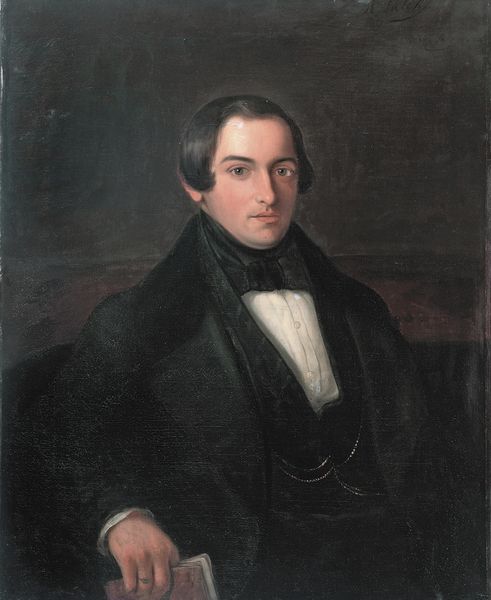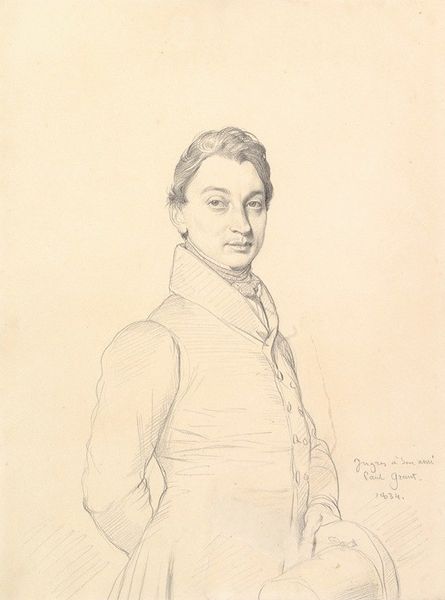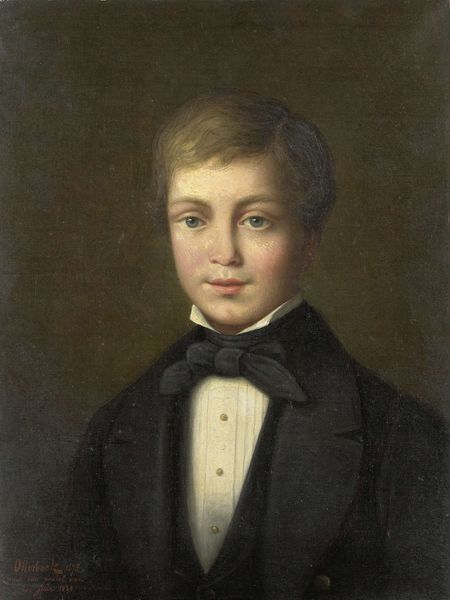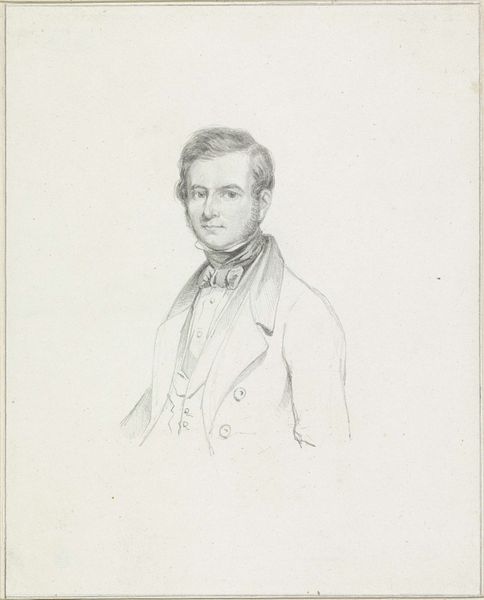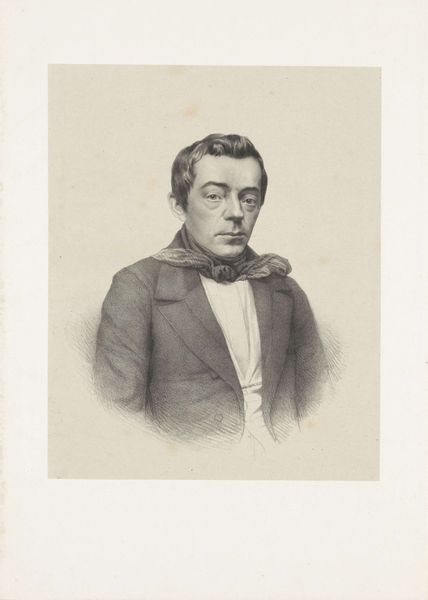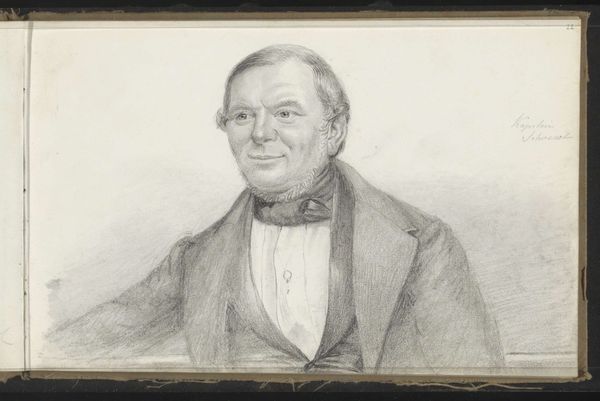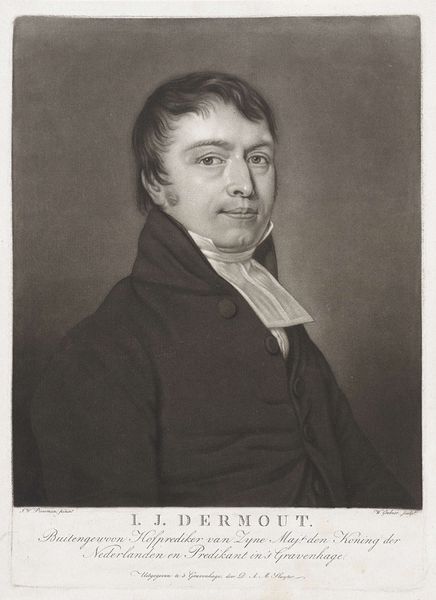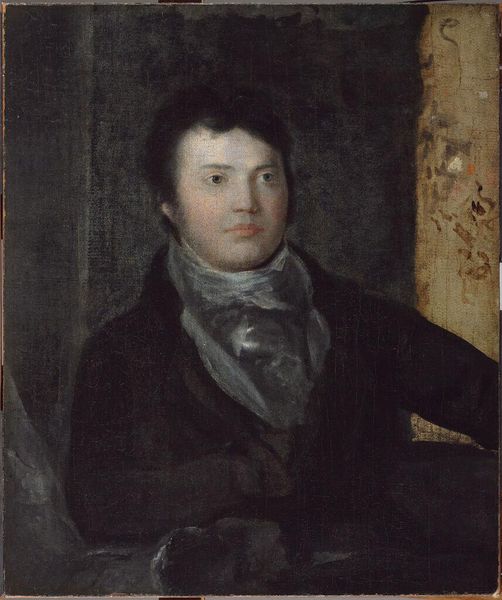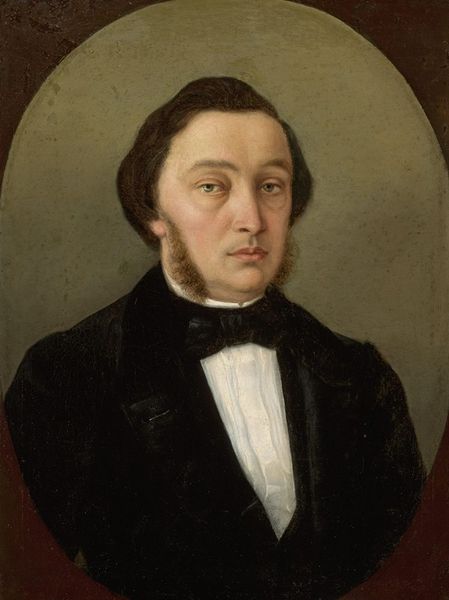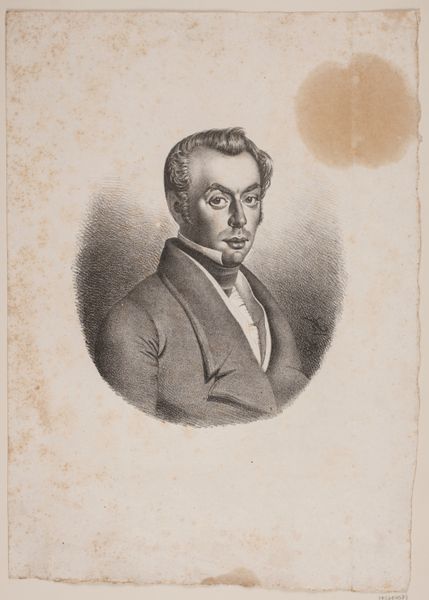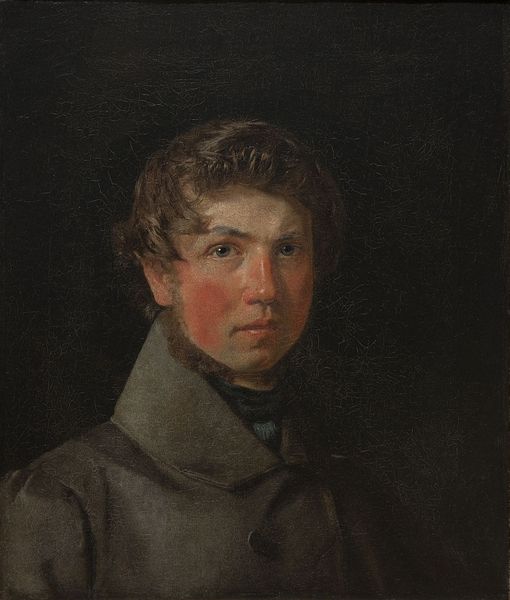
Portrait of Rudolf Johannes van den Brink, Oldest Son of Hendrik Arend van den Brink 1830 - 1850
0:00
0:00
louismoritz
Rijksmuseum
painting, oil-paint
#
portrait
#
painting
#
oil-paint
#
romanticism
#
realism
Dimensions: height 33.2 cm, width 27.3 cm, thickness 1.3 cm, depth 4.1 cm
Copyright: Rijks Museum: Open Domain
This is Louis Moritz's portrait of Rudolf Johannes van den Brink, oldest son of Hendrik Arend van den Brink, made with oil on canvas in the early 19th century. In this period, oil paint was commercially available but still required skill to manipulate. Moritz demonstrates control over the medium, blending colors to create a lifelike depiction of van den Brink’s face. The subtle gradations of light and shadow suggest a mastery of technique, achieved through years of dedicated practice. The canvas provides a relatively smooth surface, allowing for fine detail in the subject's features and clothing, though the degradation of the canvas can be seen. The act of painting a portrait itself speaks to social status. It signifies the sitter’s belonging to a class able to commission such a work. Moritz's attention to detail and his skill in capturing the likeness of van den Brink, highlight the value placed on individual representation during this time, and the amount of work that went into a single painting. Paying attention to these aspects encourages us to consider how skill, labor, and social context are all embedded within the artwork.
Comments
No comments
Be the first to comment and join the conversation on the ultimate creative platform.

